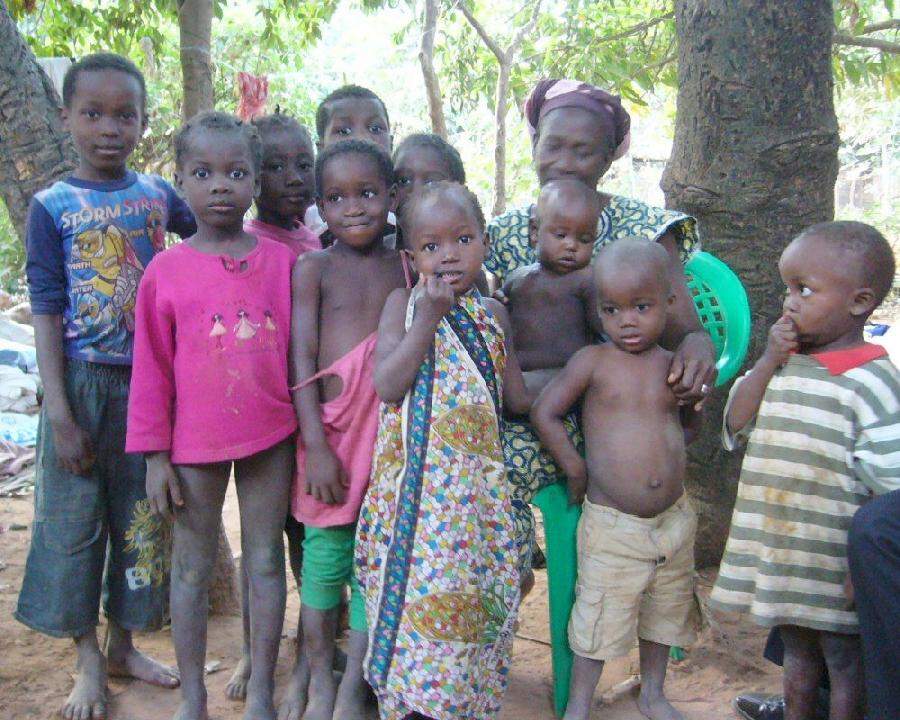
Guinea-Bissau

Figure 1.--This photograph was taken in Guinea Bissau. It shows a mother named Olympia with the last ten of her 17 children. The elder child is 19 years old. Olympia will probably have on additional children. Bisauan families can be large, but this is well above average. Aeader writes, "In Africa usually this is not a planned matter. I don't know Guinea Bissau, but I was many times in Gabon. Often at age of 17 or 16 years and sometimes also 15 years, a girl has a child; then another, often with another father. Later, already having two or three children, she marries and the couple have their children. There is commonly no planning involvd."
|
|
Guinea-Bissau was a Portuguese colony known as Portuguese Guinea. It is bordered by Senegal in the north and Guinea in the west. It is a West African country on the southwestern fringe of the Sahara. The country includes the Bissagos Islands. These are delta islands with magnificent powdery, white-sand beaches, washed by deep blue waters. The islands are destinct cultuyrally from the mainland. The climate is tropical as the country is located just north of 10°N. It is located just where the coast of Africa just bgins to reced west into the Gulf of Guinea. There are coastal mangrove swamps, a beach at Varela and rainforests in the south where elephants and chimpanzees live. Portuguese navigators moving south looking for a sea route to the East first reached Guinnea (1446). Portugal founded the Atlantic slave trde and Bissau was a major slave trading center. Boundaries were fixed with the surrounding French colonies. Nationalist actibities appeared (1960s). Many nationalists wanted union with the Cape Verde Islands. The country's already limited infrastructure was damaged by civil war (late-1990s). Transport and communications are poor by even African standards. The country is moving toward national reconciliation . succesfully holding peaceful elections (2005). We have a history page. The economy is poor and largely agricutural The country exports palm and peanut products, rice, coconuts, and timber.
HBC

Navigate the Boys' Historical Clothing Web Site:
[Introduction]
[Activities]
[Biographies]
[Chronology]
[Cloth and textiles]
[Clothing styles]
[Countries]
[Topics]
[Bibliographies]
[Contributions]
[FAQs]
[Glossaries]
[Images]
[Links]
[Registration]
[Tools]
[Boys' Clothing Home]
Navigate the Boys' Historical Clothing national pages:
[Return to the Main African country page]
[Return to the Main African page]
[Angola]
[Cape Verde Islands]
[Democratic Republic of the Congo]
[Gabon]
[Guinea]
[Lessotho]
[Liberia]
[Madagascar]
[Mali]
[Senegal]
[Sierra Leone]
]South Africa]
[Uganda]
[Portugal]
Created: 3:13 AM 10/1/2011
Last updated: 7:08 PM 11/13/2012



